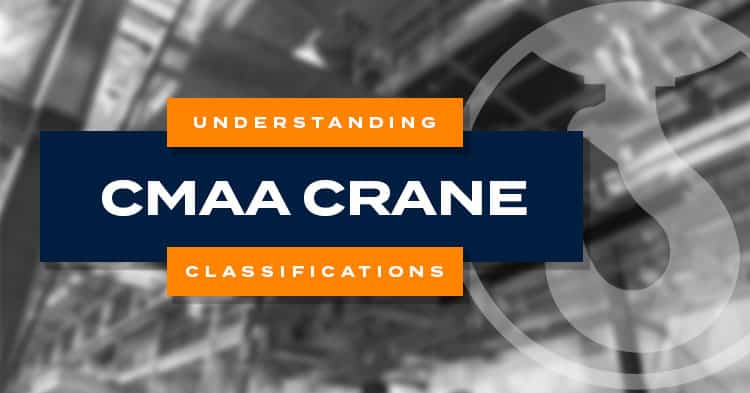Overhead cranes and hoists play an integral role in almost every industry, facilitating the efficient and safe movement of heavy materials. Selecting the appropriate crane for your application is crucial for operational safety, maintenance and overall efficiency. Understanding CMAA Crane Classifications is crucial; these classifications, developed by the Crane Manufacturers’ Association of America (CMAA), aid in the selection process and help ensure that the crane chosen is suitable for its intended workload and environment.
Crane & Hoist Classifications
Class A – Infrequent or Standby Service
Designed for precise handling at slow speeds, these cranes are ideal for environments where the crane is used infrequently, such as powerhouses, public utilities, and transformer stations.
Class B – Light Service
These cranes are suitable for light service environments where usage is low and operational speeds are moderate. Common applications include repair shops, light assembly operations, and light warehousing.
Class C – Moderate Service
These cranes are built for moderate service environments like machine shops and paper mill machine rooms. They handle loads averaging 50% of the rated capacity, making five to ten lifts per hour.
Class D – Heavy Service
These cranes are designed for heavy service requirements, such as in heavy machine shops, foundries, and container yards. They handle 10 to 20 lifts per hour with loads averaging 15 feet.
Class E – Severe Service
Throughout their life, these cranes handle loads approaching the rated capacity. Applications include scrap yards, cement mills, and lumber mills, performing twenty or more lifts per hour.
Class F – Continuous Severe Service
These cranes must handle loads approaching rated capacity continuously under severe conditions. Production facilitates use these cranes for critical tasks, requiring high reliability and ease of maintenance.
Key Criteria for Crane Selection
Consider the following criteria when selecting the right overhead crane:
- Speed: Measured in lifts per hour, determining how quickly the crane can move materials.
- Service: Frequency of use.
- Distance: The distance a crane needs to move the lifted materials.
- Rated Capacity: The average rated load of materials moved.
- Maintenance Requirements: Frequency and ease of maintenance.
- Service Conditions: The environment in which the crane operates and its accessibility for servicing.
Quality and Reliability
At American Crane & Equipment Corporation, we manufacture cranes to CMAA Specifications 70 or 74, ensuring they meet high standards of quality and reliability. We design our products to exceed customer expectations, providing safe and efficient solutions for critical environments. With a large inventory of parts and components available for same-day shipping, we ensure minimal downtime for your operations.
For over 50 years, American Crane has been a leader in providing innovative lifting solutions. Our experts are available to assist with any questions regarding crane installation, operation, and maintenance tailored to your specific industry needs.
For more information on choosing the right overhead crane, download our eBook, “Understanding Crane and Hoist Classifications,” or contact the American Crane team today.


